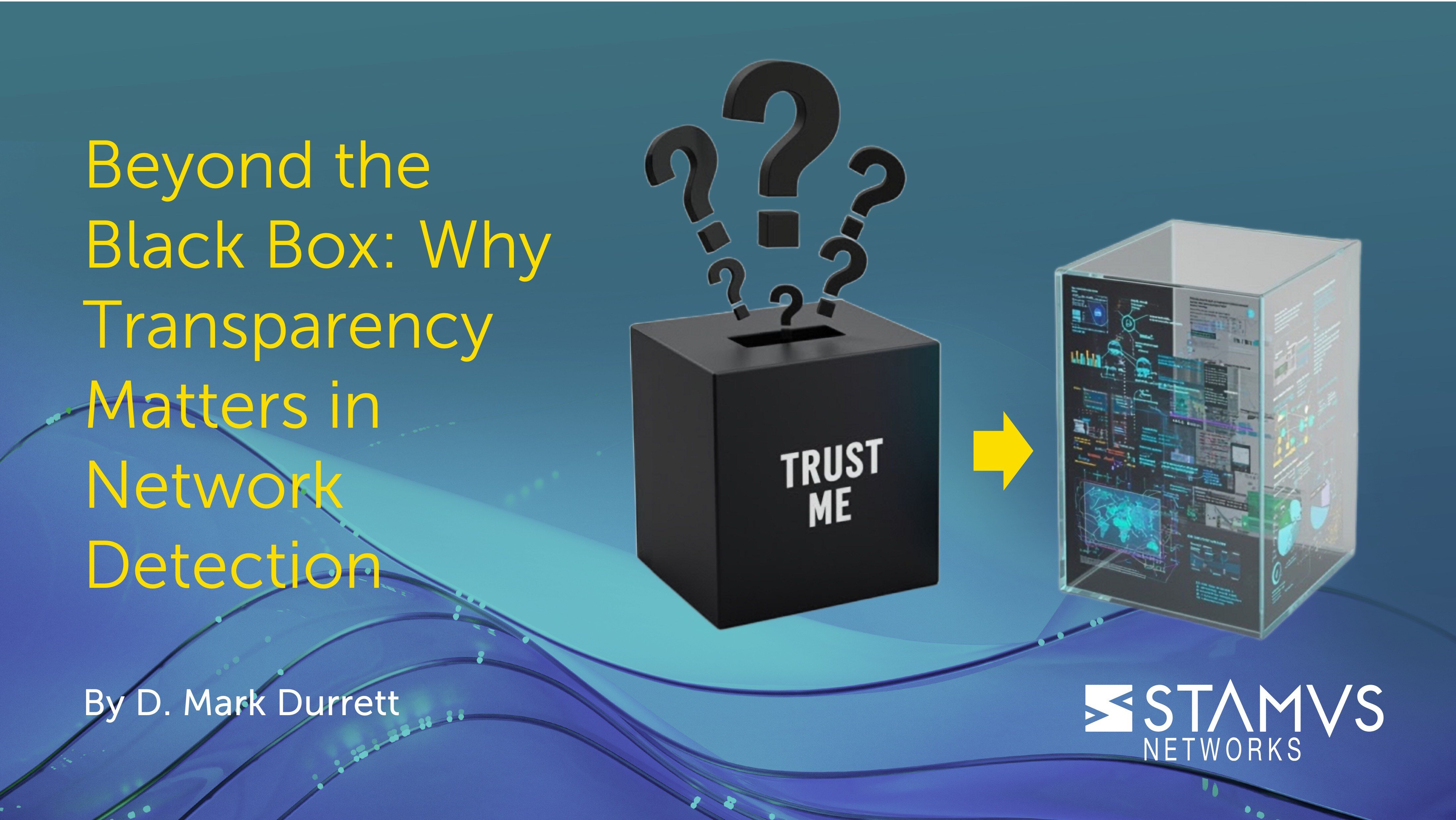In cyber security, we commonly talk about different product categories like intrusion detection systems (IDS), but how often do we actually look at real-life intrusion detection system examples? This blog post hopes to make this a reality by taking a look at an example and application of one of the best IDS solutions out there, Suricata. First, let’s review.
What is an intrusion detection system?
An intrusion detection system (IDS) is a cybersecurity tool that analyzes system activity or network traffic for patterns that might indicate an attack. These patterns could be:
- Unusual login attempts (repeated failed logins, access from unexpected locations)
- Attempts to exploit known vulnerabilities in software
- Denial-of-service attacks flooding the system with traffic
By identifying these patterns, IDS helps security personnel identify potential threats and take necessary steps to mitigate those threats. There are two main types of intrusion detection systems:
- Network Intrusion Detection System (NIDS): This type of system monitors network traffic for suspicious activity, such as port scans, denial-of-service attacks, or attempts to exploit vulnerabilities.
- Host-based Intrusion Detection System (HIDS): This type of system is installed on individual devices and monitors the activity on those devices for suspicious activity.
When an IDS detects suspicious activity, it will typically send an alert to a security administrator. The security administrator can then investigate the alert and take appropriate action, such as blocking the attacker's IP address or shutting down a compromised device.
Intrusion detection systems are an important part of a layered security defense. They can help to identify and respond to attacks that other security measures, such as firewalls, may miss. However, it's important to note that IDS systems are not foolproof and can sometimes generate false alarms or cause alert fatigue.
What are the 2 main types of IDS?
There are two main categories for Intrusion Detection Systems (IDS) based on their deployment and data source:
1. Network Intrusion Detection System (NIDS): NIDS act as network monitoring devices deployed at strategic points within a computer network. Their primary function is to continuously capture and analyze network traffic data traversing a specific network segment. NIDS can be implemented in two primary ways:
- Dedicated hardware appliances: These are specialized devices solely designed to perform NIDS functions.
- Software applications on network servers: Existing network servers can be leveraged to host NIDS software, enabling them to perform network traffic analysis alongside other server functionalities.
NIDS typically utilizes network adapter promiscuous mode. This mode allows the NIDS to capture all network traffic on the attached network segment, regardless of its intended recipient. NIDS employs two main techniques for analyzing captured network traffic data: signature-based detection and anomaly-based detection.
2. Host-Based Intrusion Detection System (HIDS): In contrast to NIDS which focuses on network traffic analysis, HIDS provides security for individual devices (hosts) within the network. HIDS function as software agents deployed directly on the operating system of the host device itself. Their primary function is to monitor and analyze activity occurring on the host device. HIDS are deployed as software agents on individual servers, desktops, or laptops within the network. A single HIDS agent is typically installed on each host device for dedicated monitoring.
HIDS collect data from various sources on the host device, including:
- System logs: These logs record events and activities within the operating system of the host device.
- File access attempts: HIDS monitor attempts to access files on the host device, including successful and failed attempts.
- Running processes: HIDS maintain a record of processes currently running on the host device.
HIDS primarily utilizes anomaly-based detection techniques. By analyzing the collected data, HIDS establishes baselines for typical host activity. Significant deviations from these baselines, such as unusual file access attempts or unexpected processes running, can indicate potential intrusions or suspicious behavior.
What are the 3 types of intrusion detection systems?
The three types of intrusion detection systems in cyber security based on detection methods are: Anomaly-based, Signature-based, and Hybrid. These methods define how the IDS analyzes data to identify potential intrusions.
- Anomaly-Based IDS: Anomaly-based IDS focuses on identifying deviations from normal behavior within a network or system. It works by establishing a baseline for normal activity by statistically analyzing network traffic or system activity over time. This baseline becomes a reference for identifying anomalies. The IDS then continuously monitors network traffic or system activity and compares the real-time data to the established baselines. Significant deviations from these baselines are flagged as potential intrusions.
- Signature-Based IDS: Signature-based IDS relies on a predefined database of attack signatures to identify malicious activity. These signatures represent known patterns or fingerprints of network attacks or suspicious system behavior. The IDS continuously monitors network traffic or system activity and compares this data against the database of attack signatures. Any matches trigger an alert, indicating a potential intrusion attempt.
- Hybrid IDS: A hybrid IDS combines both anomaly-based and signature-based detection methods to address the limitations of each approach. A hybrid system leverages signature-based detection for known threats and anomaly-based detection for novel attacks. This enhances the overall effectiveness of intrusion detection.
Each of these three detection methods (Anomaly-based, Signature-based, Hybrid) offers different strengths and weaknesses. Choosing the most suitable approach depends on factors like the specific security requirements of the network, the resource availability for managing the IDS, and the acceptable level of false positives.
What is an example and application of intrusion detection?
The best example of an intrusion detection system is Suricata.
Suricata is a free, open-source IDS/IPS cybersecurity tool that acts as both an Intrusion Detection System (IDS) and an Intrusion Prevention System (IPS). It is used by organizations all around the world to detect cyber threats and monitor networks for suspicious activity.
Suricata’s strength lies in its versatility. When tuned correctly, it is a high-performance tool that can handle large volumes of network traffic and generate vast amounts of network traffic data. It is also extremely flexible, offering deep analysis of various protocols and the ability to customize rule sets to fit your organization’s specific needs. Because it’s an open-source IDS/IPS, Suricata benefits from a large, active community that constantly develops and refines its capabilities.
Put simply, Suricata is a powerful and adaptable tool that provides a robust layer of defense for any organization’s network security strategy.
It has five primary applications:
- Threat Detection: Suricata constantly examines network traffic for malicious patterns. It compares this traffic to a vast database of known attack signatures and pre-defined Suricata rules. These signatures are like the fingerprints of specific threats, allowing Suricata to identify malware, exploit attempts, and suspicious network activity.
- Deep Packet Inspection: Suricata inspects data packets, analyzing not just the source and destination, but also the content itself. This allows it to detect hidden threats within encrypted traffic or files being transferred.
- Protocol Analysis: Suricata can analyze a wide range of network protocols, understanding how different types of communication work. This lets it identify suspicious behavior within specific protocols, like unusual data transfers or attempts to exploit vulnerabilities in certain communication methods.
- Network Traffic Baselining: Suricata can be used to establish a baseline of what "normal" traffic looks like on your network. By monitoring activity over time, a machine learning engine can use the data produced by Suricata to learn the typical patterns and identify significant deviations that might indicate a potential attack.
- Threat Hunting: Suricata's detailed logs and analysis capabilities are valuable for security professionals. They can use Suricata's data to investigate suspicious activity, identify trends, and proactively hunt for hidden threats within the network.
Explore a modern alternative
You need a network security platform that doesn’t generate an endless stream of useless alerts across part of your network, and instead automatically identifies alerts of interest and notifies you of only serious and imminent threats. Your organization deserves response-ready detection with visibility into your entire network regardless of the environment with easy access to all the contextual evidence you need to stop an attack before it can cause damage. Replace your legacy IDS with a modern network detection and response platform that gives you these features and more.
The Stamus Security Platform™ is a network-based threat detection and response solution that eliminates the challenges of legacy IDS while lowering your response time. Stamus Security Platform harnesses the full potential of your network, bringing state-of-the-art threat detection, automated event triage, and unparalleled visibility to the security team.
Book a demo to see if the Stamus Security Platform is right for your organization.
To learn more about replacing your legacy IDS, check out the following resources:
- A Practical Guide for Migrating from Your Legacy IDS/IPS to a Modern Alternative
- 12 Signs It's Time to Upgrade your Legacy IDS/IPS
- 3 Critical Questions to Answer Before a Legacy IDS/IPS Upgrade
- Weak Attack Signals your Legacy IDS will Miss
To be notified of new blog posts and other news, make sure to subscribe to the Stamus Networks blog, follow us on Twitter, LinkedIn, and Facebook, or join our Discord.






